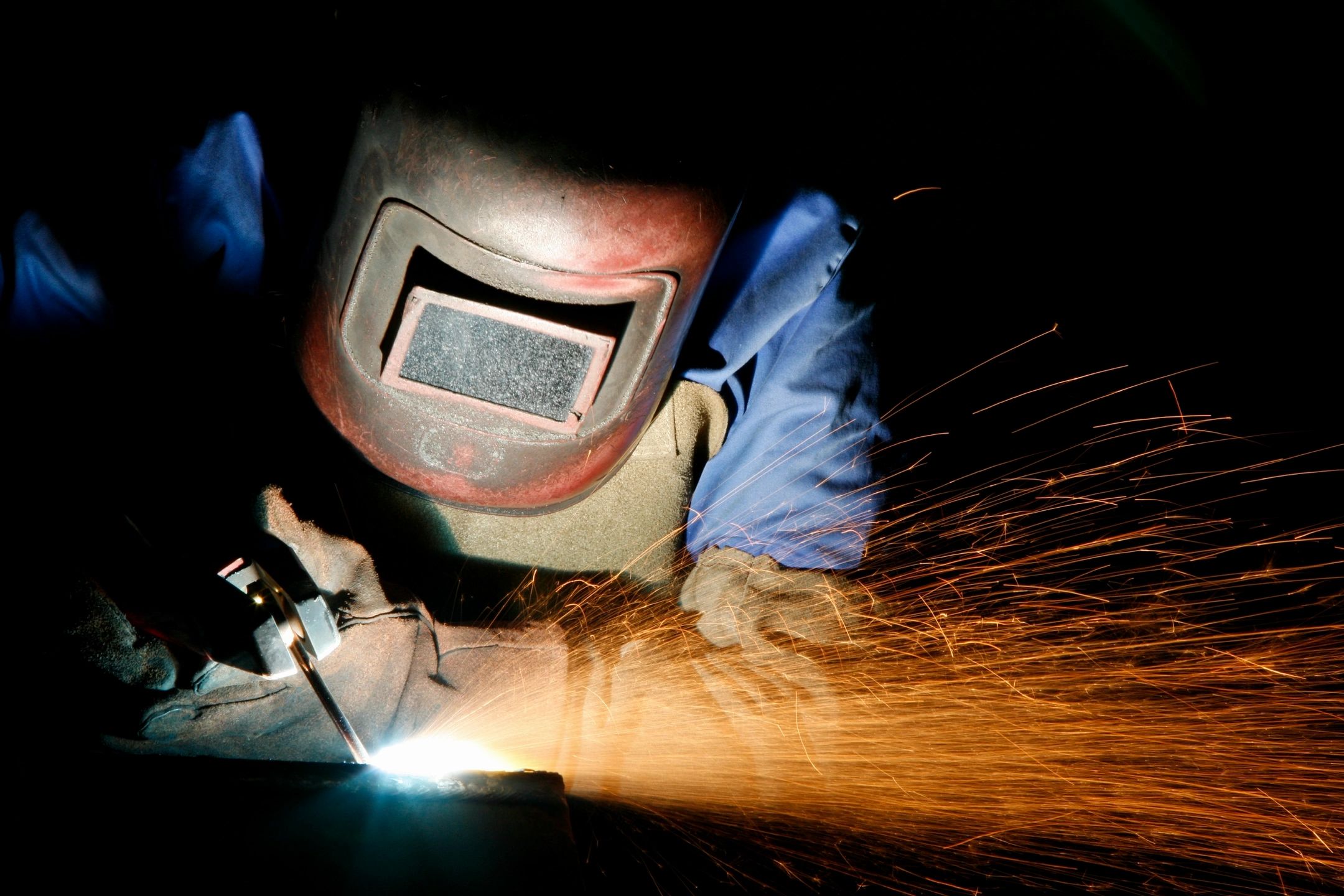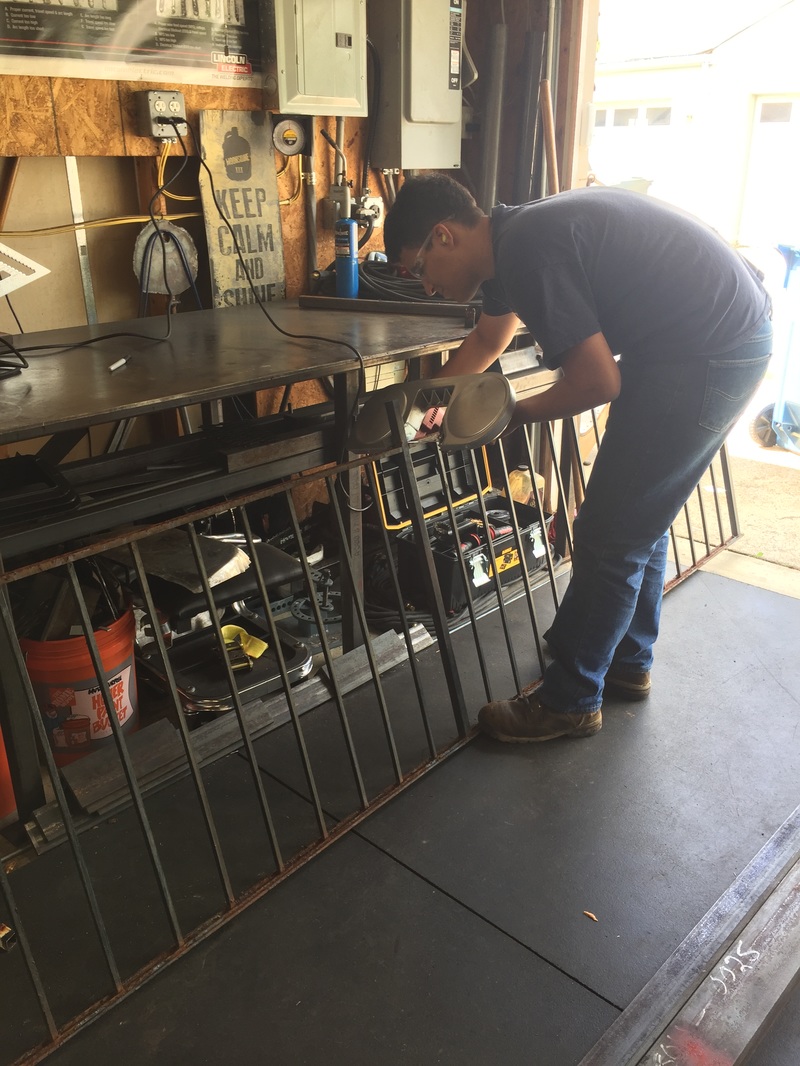Usual Welding Repair Work Issues and Exactly How to Address Them Properly
Welding repair services typically come across a variety of issues that can threaten the integrity of the last item. Typical problems include insufficient infiltration, porosity, and misalignment, to name a few. Each flaw provides unique challenges that call for certain techniques for resolution. Understanding these issues is essential for welders intending to improve their results and skills. This discussion will certainly discover these common welding repair work concerns and reliable approaches to resolve them.
Insufficient Penetration
Poor penetration takes place when the weld steel stops working to totally fuse with the base material, leading to weak joints and prospective architectural failures. This issue commonly stems from not enough heat input, incorrect electrode angle, or inappropriate welding speed. Welders may run into inadequate penetration due to a mistake of the required specifications for a details material density or kind. In addition, contamination on the base material's surface can hinder reliable bonding, intensifying the issue. To deal with inadequate penetration, welders should guarantee appropriate setups on their tools and keep a clean work surface. Routine evaluation of welds is suggested to determine any kind of deficiencies early, enabling timely adjustments and the avoidance of jeopardized architectural stability in welded settings up.
Porosity
Porosity is a common problem in bonded joints that materializes as little gas bubbles entraped within the weld metal. This defect can endanger the stability of the weld, leading to minimized toughness and possible failure under stress. Montana Mobile Welding and Repair. Porosity generally arises from contamination, moisture, or inappropriate welding strategies, which enable gases to run away right into the molten weld pool. To resolve porosity, welders ought to guarantee appropriate surface prep work, preserve a clean functioning atmosphere, and make use of appropriate welding parameters. Furthermore, selecting the ideal filler material and protecting gas can minimize gas entrapment. Regular examination and screening of welds can aid determine porosity early, assuring prompt rehabilitative activities are taken, thereby protecting the top quality and reliability of the bonded structure
Imbalance
Imbalance in welding can emerge from numerous aspects, including improper setup and thermal expansion. Comprehending the origin is necessary for reliable resolution. Numerous adjustment methods are available to realign parts and guarantee architectural stability.
Reasons of Misalignment
Welding imbalance usually originates from a selection of underlying problems that can jeopardize structural integrity. One key cause is improper fit-up of elements prior to welding, which can cause voids and irregular surfaces. Variations in thermal development during the welding procedure can likewise result in distortion, specifically if the materials being joined have various coefficients of expansion. Additionally, inadequate securing and fixturing may stop working to hold parts securely in location, resulting in movement throughout welding. Improperly maintained devices, including welding machines and tools, may present variances in the weld grain, additional adding to imbalance. Finally, driver error, coming from inadequate training or experience, can likewise play a substantial function in producing misaligned welds.
Modification Techniques Available
Addressing misalignment properly needs a combination of corrective methods tailored to the specific issues available. One common method is making use of jigs or fixtures to hold parts in the proper position during welding, making sure constant placement. Furthermore, pre-heating the materials can help reduce distortion and improve fit-up. For significant misalignment, mechanical adjustment techniques, such as making use of hydraulic jacks or clamps, can be employed to remedy the setting before welding. Post-weld heat treatment might additionally be needed to alleviate stresses brought on by misalignment. Ultimately, careful examination and modification during the configuration phase can prevent imbalance issues from coming to be considerable troubles, advertising a smoother welding procedure and enhancing total architectural integrity.
Distortion
Distortion is a typical difficulty in welding that can emerge from numerous elements, consisting of unequal heating & cooling. Understanding the sources of distortion is essential for executing efficient prevention methods. Resolving this issue not just boosts architectural honesty but likewise improves the general high quality of the weld.
Reasons of Distortion
When based on the intense warmth of welding, materials commonly go through modifications that can lead to distortion. This phenomenon largely develops from thermal development and contraction during the welding procedure. As the weld area heats up, the product increases; upon air conditioning, it contracts, which can develop internal stress and anxieties. Additionally, unequal heating throughout a workpiece can aggravate these stresses, causing warping or bending. The kind of product additionally Recommended Reading plays a significant duty; steels with varying thermal conductivity and coefficients of expansion may respond differently, resulting in uncertain distortions. Bad joint layout and inadequate fixturing can add to imbalance during welding, raising the probability of distortion. Comprehending these causes is necessary for reliable welding fixing and prevention methods.
Avoidance Techniques
Efficient avoidance methods for distortion throughout welding concentrate on controlling heat input and ensuring correct joint style. Preserving a regular heat input assists to minimize thermal expansion and contraction, which can bring about distortion. Making use of methods such as pre-heating the work surface can also lower the temperature level gradient, advertising consistent heating. Furthermore, picking proper joint designs, such as T-joints or lap joints, can boost stability and decrease anxiety focus. Carrying out proper fixturing to secure the workpieces in position further help in preserving alignment during the welding procedure. Staggered welding series can disperse warm a lot more uniformly, stopping local distortion. By applying these methods, welders can considerably decrease the probability of distortion and improve the general top quality of their welds.
Splitting
Cracking is an usual concern come across in welding repairs, often resulting from different aspects such as inappropriate air conditioning rates, product selection, or poor joint prep work. The event of fractures can considerably endanger the try here stability of the weld, causing prospective failings during operation. To address this problem, welders need to first evaluate the origin creates, ensuring that materials work and suitably selected for the specific application. Furthermore, regulating the cooling rate during the welding procedure is necessary; fast cooling can induce tension and cause cracking. Correct joint layout and preparation additionally add to reducing the risk. Executing these techniques can improve weld top quality and toughness, ultimately decreasing the chance of cracking in completed weldments.

Insufficient Fusion
A substantial issue in welding fixings is insufficient fusion, which takes place when the weld steel does not appropriately bond with the base material or previous weld passes - Montana Mobile Welding and Repair Fabrication. This issue can result in weaknesses in the joint, potentially jeopardizing the integrity of the welded structure. Factors adding to insufficient fusion include insufficient heat input, inappropriate welding technique, and contamination of the surfaces being signed up with. To resolve this issue successfully, welders need to assure correct pre-weld cleaning and surface prep work, along with readjust their welding criteria to accomplish adequate infiltration and fusion. Routine assessment throughout the welding procedure can likewise assist determine incomplete blend early, enabling timely restorative measures to boost the overall quality of the weld
Overheating
While welding fixings can improve structural honesty, overheating provides a considerable obstacle that can bring about product destruction. Extreme heat during welding can modify the mechanical homes of metals, leading to reduced strength, boosted brittleness, and warping. This sensation is specifically critical in high-stress applications where architectural reliability is critical. Identifying getting too hot can involve aesthetic assessments for staining or distortion, in addition to keeping an eye on temperature during the welding procedure. To alleviate the risks connected with getting too hot, welders must use suitable techniques, such as regulating warm input, adjusting traveling rate, and making use of suitable filler materials. Additionally, implementing pre- and post-weld warm therapies can aid restore material properties and enhance the overall high quality of the repair work, making sure lasting performance and security.
Often Asked Concerns
What Are the Common Indications of a Welding Defect?

How Can I Test My Welds for High quality?
To test welds for high quality, one can make use of aesthetic inspections, ultrasonic screening, and radiographic methods. Each method ensures structural stability, recognizes issues, and validates adherence to defined requirements, inevitably boosting the integrity of the welded joints.
What Safety and security Precautions Should I Take While Welding?
When welding, one ought to prioritize security by wearing proper personal protective devices, guaranteeing correct air flow, protecting combustible products away, preserving a clean workspace, and knowing try this site environments to protect against injuries and crashes.
Can I Repair a Weld Without Remodeling the Entire Joint?
Repairing a weld without redesigning the whole joint is feasible, relying on the damage (Montana Mobile Welding and Repair Welding). Methods such as grinding, adding filler product, or using a welding procedure can efficiently attend to particular imperfections while maintaining the bordering framework
What Tools Are Essential for Efficient Welding Fixes?
Vital tools for effective welding repair work include a welding machine, cord brush, mill, safety equipment, clamps, and filler materials. Each device plays a vital duty in ensuring quality and security throughout the fixing procedure. Porosity usually occurs from contamination, moisture, or inappropriate welding strategies, which enable gases to run away right into the molten weld pool. Improperly maintained tools, consisting of welding equipments and tools, might introduce variances in the weld grain, additional adding to misalignment. When subjected to the intense heat of welding, products commonly go through adjustments that can lead to distortion. Splitting is an usual concern encountered in welding repair work, often resulting from different factors such as improper cooling rates, product option, or insufficient joint preparation. A substantial problem in welding repair services is insufficient blend, which happens when the weld steel does not adequately bond with the base product or previous weld passes.